17 signs that the 6th great extinction - the nightmare of humanity is about to sweep through the earth
The phrase "mass extinction" or "great extinction" often reminds many people of the fact that meteorites crash into the earth leading to the extinction of dinosaurs as well as millions of other species of 65 million years. before. More specifically about this event, after colliding with the earth, this rock coming from space up to nearly 6 miles (approximately 10 km) has caused a super tsunami in the Atlantic Ocean, along with with countless earthquakes, and the impact of these earthquakes has contributed to the Americas as today. In addition, the collision has created an extremely intense heat, 'roasting' the earth and the consequences are as we know, dinosaurs along with 75% of other animals and plants on the planet have been completely erase.

- How are people using plastic to destroy nature?
However, in fact, extinction is a much broader and broader concept. Extinction is a marked decline in the abundance and diversity of large species (not microorganisms). This phenomenon occurs when the rate of extinction increases rapidly compared to the rate of species formation. Since life appeared on Earth, there have been many mass extinctions taking place at the rate of extinction far beyond the average speed. According to scientists' estimates. Over the past 540 million years, there have been 5 very large extinctions, also known as extinction (from 50% of animals extinct). However, the event that took place 65 million years ago is often most concerned by us because it left a lot of research evidence, and opened the opportunity to step up the historical arena for mammals. in which the dominant species is human. As for the previous great extinctions, they often do not leave many fossils due to the animal's lack of hard parts of this period, making it difficult for scientists to grasp the correct expressions of births. living things on the earth during that time.

Back to the present time. Life on earth is still going on every day, our life is still going, but deep in it is a disaster that is not out of the general rule of the earth for hundreds of millions of years, that it is the great extinction. Although not too obvious, there is another cruel mass extinction event taking place slowly on the earth, and if you pay close attention and consider changes, you will see this statement. not without foundation.
This will be the 6th great extinction in the history of the earth, which tends to attack the global fauna on many 'fronts'. In particular, the process is faster and more powerful as the oceans are constantly heating up, deforestation and climate change are making the diversity of the vegetation be seriously damaged, as well as the number of animals is declining at a rapid rate that has never been seen every year.
Most sadly, these alarming extinction trends are being motivated by a major factor, namely: People. As a result of a study published in 2014, the current extinction rate on Earth is 1,000 times higher than when there is no human existence on the planet. In addition, a recently published summary of the United Nations' global climate change situation also provided a similar warning: "Human actions have been, are, and will be pushed. The world comes to the brink of a new extinction, faster than ever. '
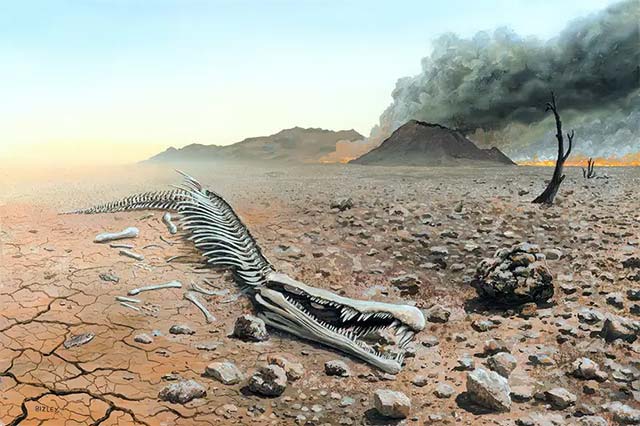
- China has just built the world's largest air purifier to solve the problem of dust
More specifically, the UN's planetary biodiversity assessment report found that nearly 1 million species of plants and animals on earth are facing extinction in the The near future is a consequence of human activities for many decades.
In addition, another recent study has also led to the same conclusion. Intensive research with the participation of leading scientists in the world in 2017 has shown the fact that animals around the world are undergoing a "biological destruction". and that "the current mass extinction phase of the human era has gone far beyond most of the previous assumptions."
So where do scientists rely to assert that the earth is entering the 6th great extinction at such a fast rate? Here are 17 signs that our planet is actually entering a "death" phase, as well as the reason why humans are the ones who must take full responsibility before this disaster.
The insects are disappearing on the earth at a record speed. According to a study, as many as 40% of the insects that have appeared in the world today have disappeared or constantly declined in number rapidly.
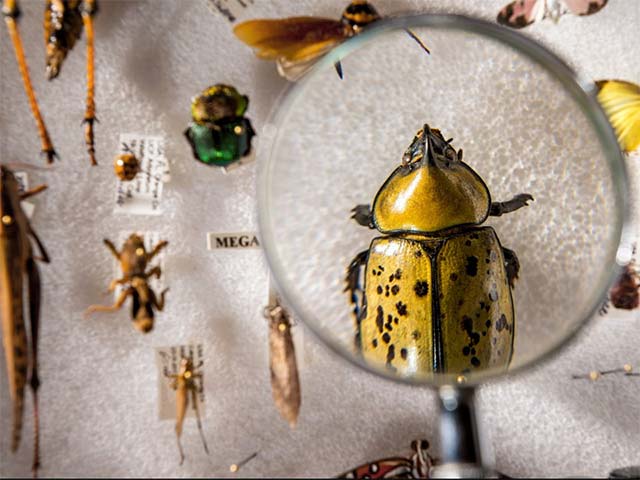
A very large-scale study completed in early 2019 showed that the total number of all insects on the planet is declining at a frightening rate, up to 2.5% per year.
If this trend continues to be sustained without any interventions, the earth may be completely absent from insects by 2119.
"In the next 10 years, you will no longer see a quarter of the insects I have met before, in half the next 50 years, and in 100 years, the children will only know the existence of insects through pages or templates stored in biology museums, "said biologist Francisco Sánchez-Bayo, co-author of the study.
However, the disappearance of insects will also lead to great disasters for many other species, including plants and especially insects that specialize in insects. For simple examples, some insects such as bees, flies and other pollinators play an important role in the production of fruits, vegetables, seeds, or more broadly, to maintain the diversity of many plant species. . Thus, the disappearance of insects will really be a big problem. In addition, insects, insects in general are also an indispensable food source for many birds, fish and mammals or even humans.
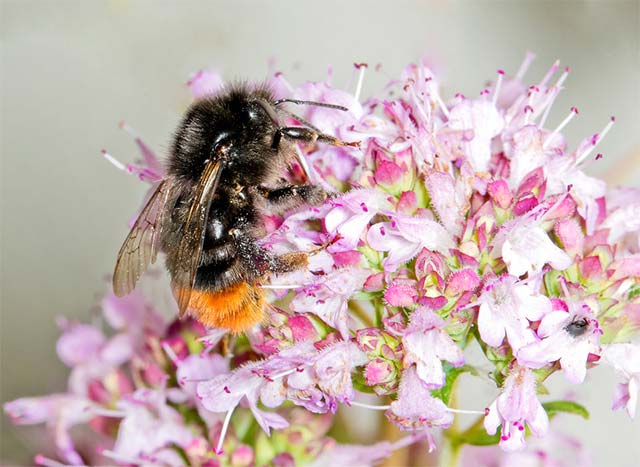
- Microwaves produce a lot of CO2 equivalent to nearly 7 million cars
A new study published recently in the journal Nature Communications details the fact that up to one-third of the 353 wild bees and buffalo flies in the UK have disappeared completely or experienced failure. Significantly decreased in quantity during the period between 1980 and 2013.
Besides, the team also noted that the geographical range in the habitat of bees and buffalo flies has decreased by about 25% - which is a net loss of about 11 species per square kilometer, mainly due to human intrusion into pollinated insect habitats.
A recent United Nations report calculates that the decline in the number of wild bees and other pollinators is expected to cause losses of up to $ 577 billion in crop production worldwide each year.
Insects are not the only creatures heavily influenced by human activities. Over the past 50 years, more than 500 species of amphibians worldwide have suffered a serious decline in quantity - 90 of them are completely extinct. Besides humans, poisonous mushrooms called chytridiomycosis specialized in frog meat corrosion are also the names responsible for this.
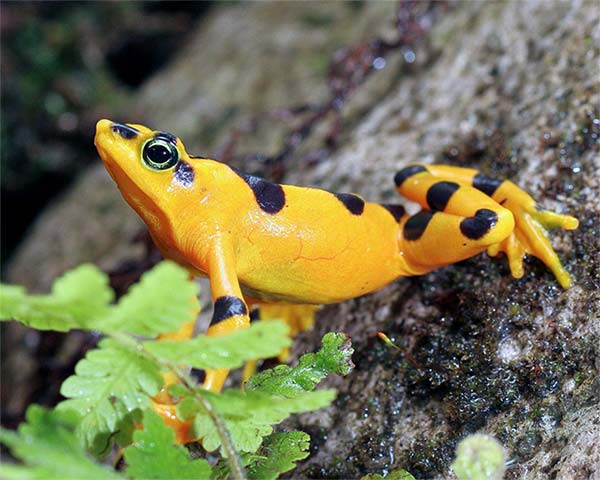
A recent study in Science shows how quickly the spread of chytridiomycosis, also known as chytrid, as well as how quickly it destroys frogs, toads and salamanders around the world. .
Sadly, the spread of this poisonous mushroom has been greatly helped by humans through global wildlife trade activities. It was this activity that allowed chytrid fungi to spread more widely than just limited to certain areas as it is.
According to the authors of the study, the rapid death of amphibians associated with chytrid represents a significant loss in the greatest biodiversity - caused by a disease - already ever recorded so far.
Another study published in Current Biology notes that amphibians in general - not just frogs - are among the most endangered animal groups, with at least 2,000 species. is estimated to be in danger of extinction in the near future.
The earth seems to be undergoing a "biological destruction" process at an unusually fast pace. You may not know, but up to half of the total animal population that once shared the habitat on the planet with the present person has completely disappeared.
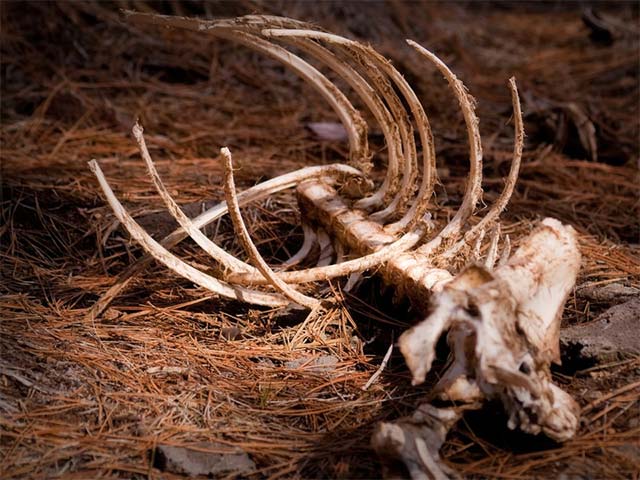
- Air pollution can kill 60,000 people by 2030
A study conducted in 2017 examined all animal populations across the planet (not just insects) by examining 27,600 vertebrate species - that is, about half of the total. We know once existed.
Some species are facing the risk of complete extinction, while some specific regional populations are disappearing in specific areas. And the point is that the speed of this process is very high. This fact has made scientists sit idly by our knowledge of biology for hundreds of years to show that these local scale extinctions are "the prelude to extinction of a wide population of species ".
Therefore, even the decline in the number of individuals in animal populations that has not been classified as endangered is still a worrying sign.
More than 26,500 species of animals around the world are threatened with extinction, and this number is expected to continue to rise sharply in the next few years.
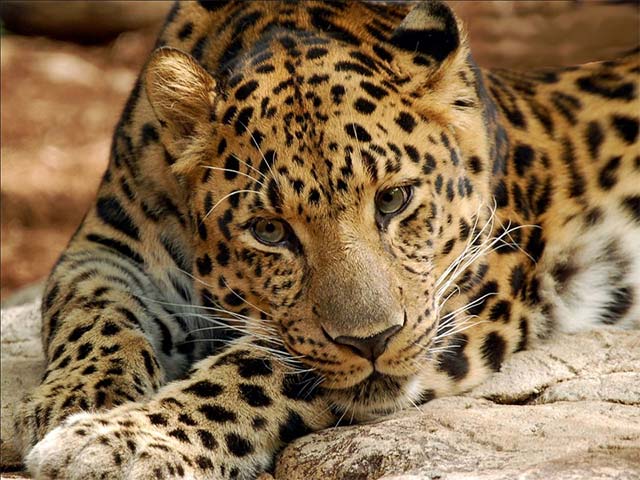
According to the International Union for Conservation of Nature (IUCN), more than 27% of all groups and species that exist on the planet are on the list of threatened extinction thought to be being 'deleted' in just a few decades, particularly some species are at risk of disappearing in the next few years.
In addition, IUCN researchers also predict that 99.9% of the capacity is likely to mean that critically endangered will almost disappear on the planet within the next 100 years, while this rate for endangered species is 67%.
According to the UN report, the number of threatened species may reach nearly . 1 million.
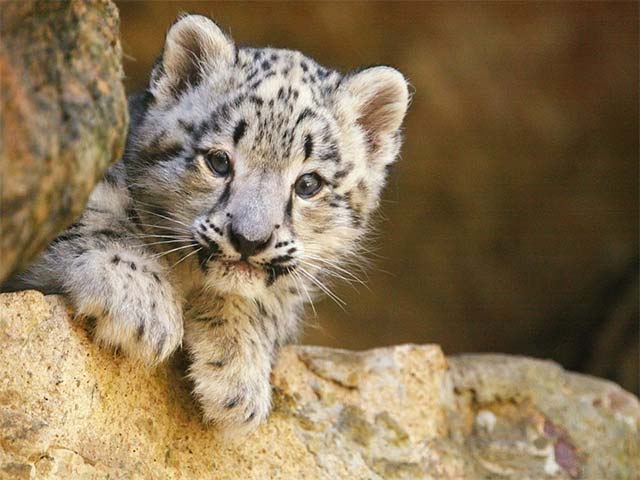
The United Nations in-depth report has estimated that about 40% of amphibians, more than 33% of all marine and coral species (coral reef formation), and at least 10% of species Insects will soon be 'listed' on the list of threatened extinction, equivalent to nearly 1 million different species of organisms. Besides, scientists also found that currently, more than 500,000 species on earth have no longer enough natural habitats to ensure their long-term survival.
More worrisome is the 'extinct domino effect'. We all know that in nature, all animals have a close relationship with each other in many ways, the most prominent of which is the concept of 'food chain'. Thus, the loss of even one species can disrupt the food chain, resulting in the entire biological community collapsing.
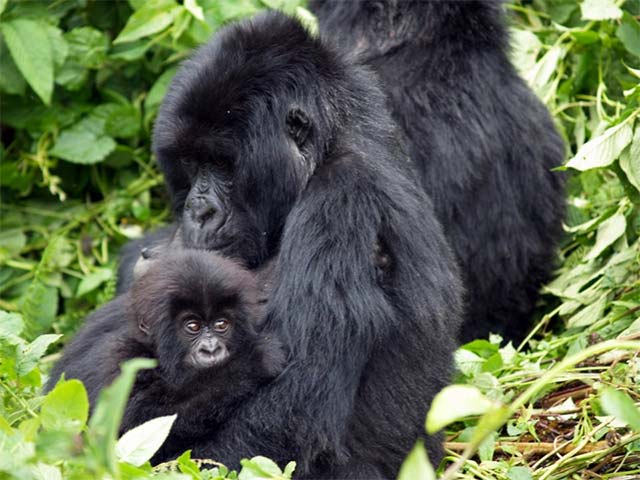
- You will be startled when watching the video describing the process of Earth's hotness in the past 100 years
A study carried out in 2018 published on Scientific Reports made the comment that scientists may have underestimated the number of how many species are extinct worldwide.
'Assessment of the risk of extinction may stem from erroneous calculations in estimating the evolution of global climate change as well as the harm it causes to closely related organisms. come together. This can cause errors of up to 10 times, 'said biologist Corey Bradshaw, co-author of the study.
The study of Corey Bradshaw and colleagues showed that the loss of a species can lead to the disappearance of many other species (this process is called 'co-extinction') and may make the whole The ecosystem changes to a sudden, sudden or even complete collapse. For example, a flower cannot exist without symbiosis from another insect that helps it pollinate. If that pollinated species is extinct, the same outcome will soon happen to flowers, which is inevitable.
"Moreover, the extinction of a species is often overlooked and 'ignored' before we completely lose other related species," the team said. Currently, 40% of amphibian species, 25% of mammals and 33% of the planet's coral reefs are facing near-extinction risks.
Another study conducted in 2015 for birds, reptiles, amphibians and mammals has come to the conclusion that the average extinction rate in this century on the planet will be 100 times higher. compared to normal.
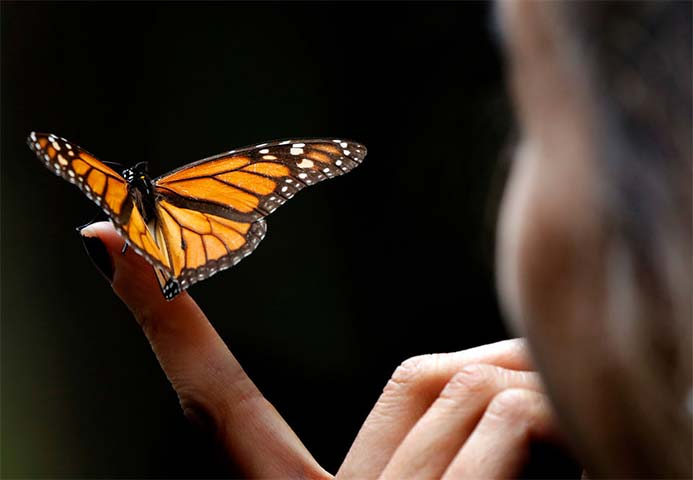
Elizabeth Kolbert, author of the book "The Sixth Extinction," once shared with National Geographic that if the results of this study become a reality, then it really is' The worst nightmare for humans' when within just a few decades, 75% of animals can become extinct. It means that our children and grandchildren will be forever unable to know how beautiful and interesting the earth they are living.
In about 50 years, about 1,700 amphibian, bird and mammal species will face a higher risk of extinction than expected because their natural habitat is shrinking rapidly.
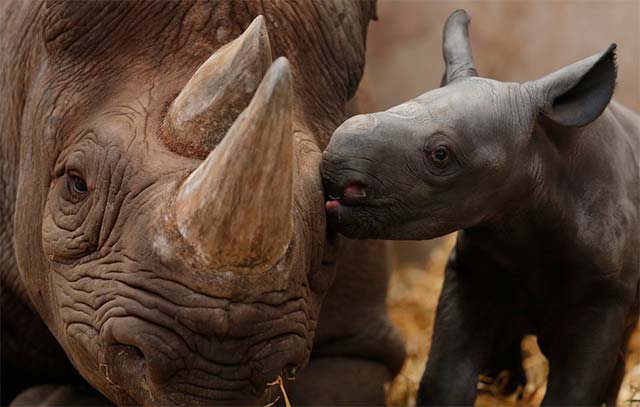
A new study conducted in early 2019 shows that by 2070, nearly 1,700 terrestrial animals will lose between 30% and 50% of their current habitat range due to excessive land use by human. In particular, future use of human land will seriously affect the habitat of 886 amphibian species, 436 bird species and 376 mammal species. Losing habitat means lack of food and the ability to face the 'civilization' of older people, which in turn leads to a higher risk of extinction.
Illegal logging and deforestation in the world in general and for the Amazon rainforest in particular have been, and are, will be of particular concern to mankind.

- The "dead zone" on the ocean threatens the life and ecosystem of many seas
According to statistics from the World Wildlife Fund, the World Wildlife Fund, about 17% of the Amazon - the green lung of the earth has been completely destroyed within the last 5 decades, mainly due to children's needs. people in the expansion of agricultural land. The Amazon is the largest and most important forest for our planet. About 80% of the world's animals can be found in tropical rainforests like the Amazon, including the threatened Amur species.
Looking more broadly, the following statistics will make those who are still calm will have to be startled, that is, there are more than 18 million acres of forest disappearing around the world every year, while one The standard 11-person football field currently has only about 1.32 acres!
Besides taking away the habitats of plants and animals, excessive logging and deforestation are also the main causes of the decline in the ability of carbon dioxide (CO2) to absorb in the atmosphere. vegetation. We all know that CO2 is the culprit of the greenhouse effect. The amount of CO2 in the atmosphere is increasing due to industrial activities as well as human activities, while the leading source of CO2 absorption is forests which are losing more and more, so love The complicated situation of global warming in the past few decades is probably the inevitable consequence.
Over the next 50 years, the consequences of human activities will cause the number of mammals to become extinct so much that it can repel the evolutionary diversity of the Earth, causing biodiversity. learning will be irreversible for about 3 million years.
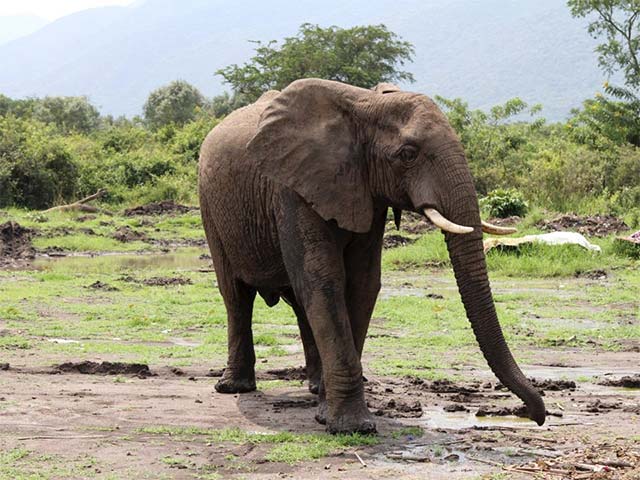
- The Earth has more than 8 billion tons of plastic, weighing about 1 billion elephants
That is the conclusion of a study published in 2018 and according to scientists, after that loss, our planet will need between 3 million and 5 million years with all reasonable conditions. Most likely, it is possible to restore the level of biodiversity that we are witnessing on earth today.
Sadly, if you want to return the planet's biodiversity to a state before modern humans evolve, the time needed will be much longer - up to 7 million years.
For paleontologists, the time it takes for the earth to restore its inherent biodiversity is even longer. According to a new study, our planet needs 10 million years or more to restore the ecosystem after a mass extinction event.
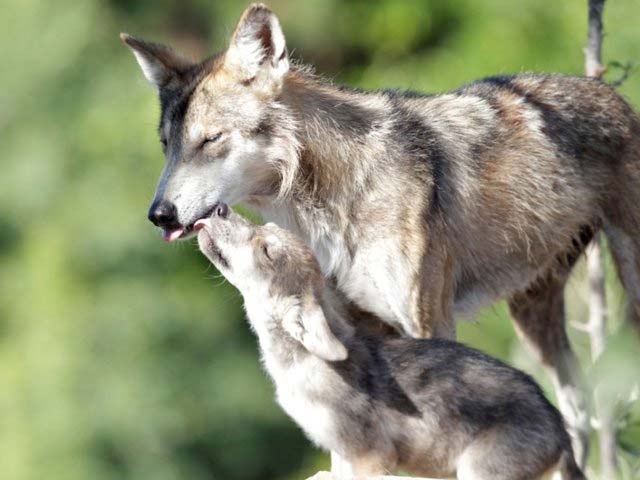
A new study published in Nature Ecology and Evolution shows that it takes about 10 million years for Earth's biodiversity to recover from a mass extinction event that wiped out dinosaurs 65 million years ago. ago.
"The loss in biodiversity will not be easy to recover, even for millions of years, and so, when you imagine extinction in the coral reef ecosystem, or ecosystem. rainforest, or grassland, or anywhere on this earth, meaning that the things you have seen from now on will take millions of years to recover, it is truly a disaster ', Chris Lowery, a paleontologist and co-author of the study, shared.
Exotic species are also one of the main factors leading to the loss of biodiversity.
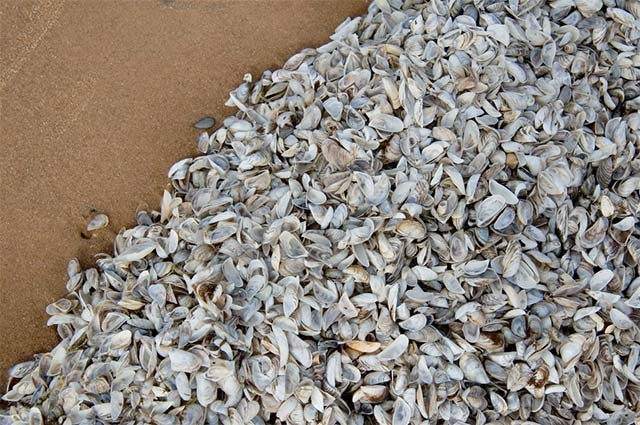
A new study published in February 2019 shows the fact that alien species are the main driving force of extinction as well as degradation in biodiversity for both animals and plants in many years ago. If you do not know, alien organisms are creatures that appear and grow in areas that are not their natural habitats. Invasive alien species are alien species that encroach on habitat or harm native species, causing ecological imbalance where they occur and develop. They quickly proliferate, flourish, and control to become an alternative flora and fauna, seriously threatening native flora and fauna, affecting biodiversity. Exotic species can be animals, plants, fungi or bacteria.
However, it is worth mentioning that many invasive alien species have been accidentally spread by humans themselves. During thousands of years of development, people can bring exotic species from one continent to the other, from one country or region to another when traveling, exploring and traveling. , and especially in trading activities. For a simple example, red-eared turtles are considered beautiful and easy-to-raise creatures so they are imported and sold rampant in our country for many years. However, when released into the natural environment (ponds, lakes, rivers and streams) in Vietnam, red-eared turtles have almost no natural enemies, and they can eat anything from shrimp and fish species. to plants, gradually growing uncontrollably in number and devastating biodiversity where they live.
Another recent study also found that since 1500, there have been 953 extinctions on a global scale with some plant and animal species, about a third of which stem from the invasion of alien species.
The ocean is absorbing so much excess heat trapped on the surface of the earth as a result of the increase in greenhouse gases in the atmosphere, which is killing marine and reef species. shout in the oceans around the globe.
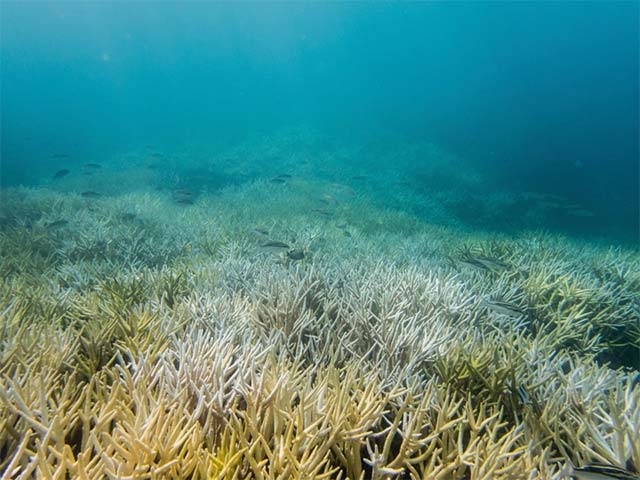
The oceans on the planet are absorbing nearly 93% of the increased heat due to the 'excess' of greenhouse gases in the earth's atmosphere. 2018 is credited with the year when the oceans on the planet had the warmest temperatures ever, and scientists have recently realized that our oceans are heating up 40% faster than new predictions were made only a few years ago.
The temperature of the oceans rises higher along with water acidification causing algae living inside coral tissues to pop out and coral turning white, this process is called coral bleaching. Corals often survive each wave of bleaching, but the recovery process is slow, because during that period, they also faced many other causes, such as illness.
Consequently, coral reefs - and at the same time the marine ecosystems they support - are dying. Around the world, about 50% of the world's coral reefs have died within just 30 years.
Besides marine life, species that live in fresh water cannot avoid the consequences of planetary warming.
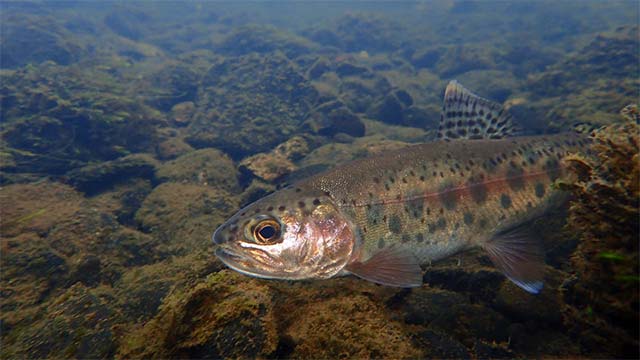
- These 13 cities may increase by more than 2 degrees Celsius by 2020
A study conducted in 2013 showed that up to 82% of native freshwater fishes in California are in a state of threatened extinction because of climate change.
The number of most native freshwater fish populations worldwide is expected to decline, even some may become extinct. In particular, the only species that live and reproduce in the cold water environment of 21 degrees will have the highest risk of extinction.
Ocean warming is also the cause of rising sea levels. At the same time, sea level rise has affected the habitat of vulnerable species, even human beings.
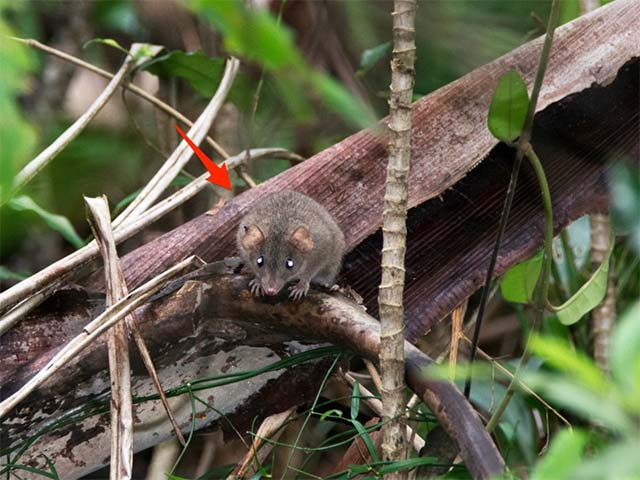
- Why are the Antarctic glaciers in France interested in by scientists?
Water, like most other things on earth, expands when it heats up - so warmer water will take up more space. According to the Smithsonian, global sea levels today are 5 to 8 inches higher than 1900.
In February, the Australian environment minister officially announced that a rodent named Bramble Cay would be the first animal to become extinct due to climate change - specifically sea level rise, but The roots here are still due to human activities.
This small rat is native to an island in Queensland, eastern Australia, but its low-lying territory is only 4-5m above sea level. With the impact of climate change, not only sea level rise engulfed the habitat of Bramble Cay rat, but also made the island increasingly submerged in seawater with tidal waves and big storms constantly sweeping through. Besides, the floods also caused great damage to the island's vegetation.
Chính hệ thực vật này đã cung cấp cho các loài động vật sinh sống trên đảo như Bramble Cay thức ăn và nơi trú ẩn, do đó sự suy giảm của thảm thực vật hoàn toàn có thể kéo theo sự tàn lụi của hệ động vật, ảnh hưởng nghiêm trọng đến hệ sinh thái chung.
Các đại dương nóng lên cũng đang dẫn đến hiện tượng băng tan ở Bắc Cực và Nam Cực với tốc độ nhanh chưa từng có, góp phần làm tăng mực nước biển toàn cầu. Chỉ tính riêng ở Mỹ, có đến 17% trong số tất cả các loài động vật sẽ nằm trong danh sách bị đe dọa và có nguy cơ tuyệt chủng do nước biển dâng cao.
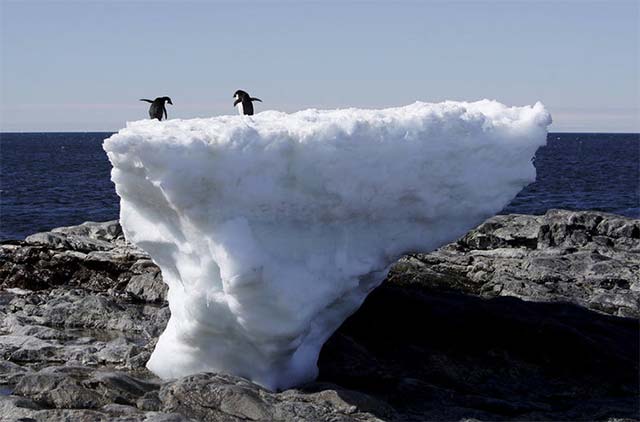
- Nhiệt độ toàn cầu chỉ cần tăng thêm nửa độ cũng có thể khiến 5 triệu người mất nhà ở
Băng tan có thể làm tăng đáng kể mực nước biển. Hiện tại, dải băng ở Nam Cực đang tan chảy với tốc độ nhanh gấp gần 6 lần so với những năm 1980. Còn về phía cực bắc, những lớp băng của Greenland đang tan nhanh gấp 4 lần so với chỉ 16 năm trước. Bán đảo lớn nhất thế giới này đã mất đi hơn 400 tỷ tấn băng chỉ trong năm 2012.
Trong trường hợp xấu nhất, được gọi là "pulse", hiện tượng nước biển ấm hơn có thể khiến các dòng sông băng - nhân tố chính giúp ngăn giữ những tảng băng khổng lồ tại Nam Cực và Greenland biến mất. Hệ quả là những tảng băng khổng lồ có thể có kích thước lên đến hàng nghìn km2 sẽ tách khỏi 2 cực, trôi nổi và tan chảy ở các đại dương, góp phần dẫn đến việc mực nước biển dâng nhanh trên khắp thế giới.
Theo một báo cáo của Trung tâm Đa dạng sinh học Hoa Kỳ, hiện tượng nước biển dâng cao đang đe dọa sự tồn vong của 233 loài động vật và thực vật nằm trong danh mục bảo vệ đặc biệt của 23 tiểu bảng ven biển trên khắp lãnh thổ Hoa Kỳ.
Báo cáo cũng lưu ý rằng 17% trong số tất cả các loài bị đe dọa và có nguy cơ tuyệt chủng của Hoa Kỳ dễ bị tổn thương do mực nước biển dâng cao cũng như các hình thái thời tiết cực đoan gây ra bởi biến đổi khí hậu như bão, lũ lụt, sóng thần. Trong đó, các loài có nguy cơ hàng đầu bao gồm hải cẩu tu sĩ Hawaii và rùa biển loggerhead.
Cứ 6 loài động vật sinh sống trên trái đất thì sẽ có 1 loài sẽ tuyệt chủng do trái đất ấm lên.
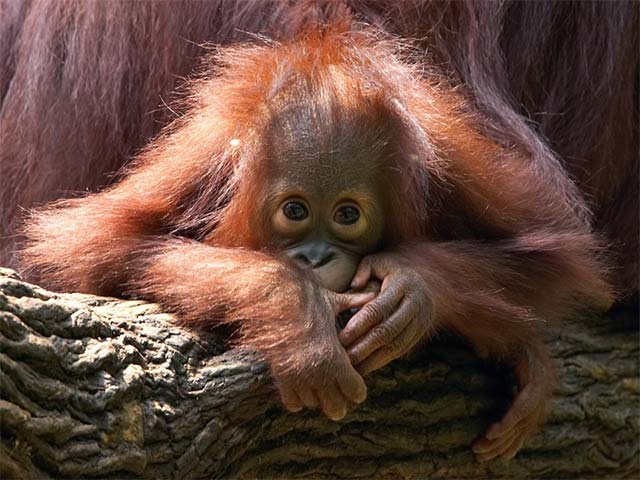
- Một nửa số động vật hoang dã của những khu rừng lớn có thể biến mất do hành tinh nóng lên
Một phân tích được công bố vào năm 2015 đã tiến hành xem xét hơn 130 nghiên cứu về số lượng động vật đang suy giảm được thực hiện trước đó và thấy rằng 1/6 hệ sinh thái động vật trên trái đất biến mất nếu hành tinh vẫn tiếp tục ấm lên với tốc độ hiện tại.
Hệ sinh thái động thực vật ở Nam Mỹ và Châu Đại Dương được cho là sẽ chịu ảnh hưởng đầu tiên và nặng nề nhất do biến đổi khí hậu, trong khi các loài sinh sống ở Bắc Mỹ sẽ chịu rủi ro thấp nhất.
Những sự kiện đại tuyệt chủng hàng loạt trước đây thường đi kèm với các dấu hiệu cảnh báo. Và đáng buồn là các 'triệu chứng' này rất giống với những gì chúng ta đang chứng kiến hiện tại.
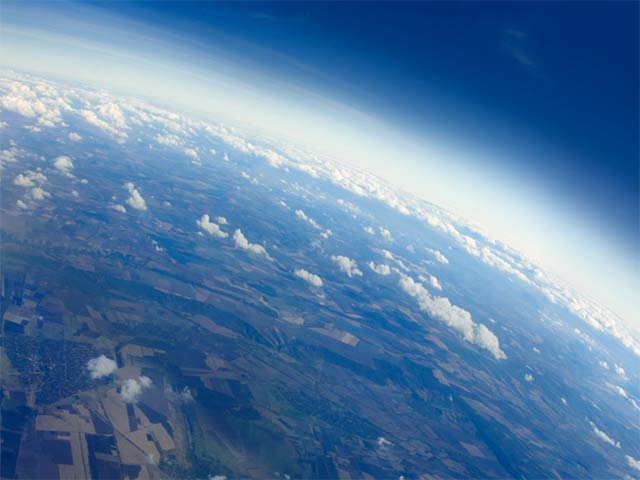
- Các nhà nghiên cứu chuyển CO thành CO2 với một nguyên tử kim loại đơn
Sự kiện tuyệt chủng hàng loạt tàn khốc nhất trong lịch sử trái đất được gọi là thời kỳ tuyệt chủng Permi-Triassic hay 'Great Dying'. Nó đã xảy ra cách đây 252 triệu năm, tức là trước cả buổi bình minh của loài khủng long.
Trong suốt thời kỳ Great Dying, khoảng 90% các loài động thực vật sinh sống trên Trái đất đã bị xóa sổ. Theo thống kê của National Geographic, chỉ có ít hơn 5% các loài sinh vật biển sống sót và 1/3 các loài động vật trên cạn vượt qua được qua 'kiếp nạn' Great Dying. Nếu xét về quy mô, sự kiện này đã làm lu mờ hoàn toàn thảm họa nổi tiếng đã giết chết con khủng long cuối cùng vào khoảng 187 triệu năm sau đó.
Các nhà khoa học tin rằng tuyệt chủng hàng loạt bắt nguồn từ sự phát tán nhanh chóng và phóng thích lượng khí nhà kính cực lớn vào khí quyển quá nhanh sau sự phun trào của các núi lửa tại khu vực Siberia. Điều này đã khiến hành tinh ấm lên với tốc độ 'chết người'. Ở thời điểm hiện tại, tất nhiên tốc độ ấm lên của trái đất chậm hơn so với thời kỳ tiền Great Dying rất nhiều, những các dấu hiệu cảnh báo lại hoàn toàn tương đồng. Trên thực tế, một nghiên cứu trong năm 2018 đã lưu ý rằng những dấu hiệu ban đầu đó đã có thể xuất hiện 700.000 năm trước khi sự kiện tuyệt chủng Great Dying đáng sợ diễn ra.
"Có nhiều bằng chứng về sự nóng lên toàn cầu nghiêm trọng, axit hóa đại dương và thiếu oxy", tác giả chính của công trình nghiên cứu, Giáo sư Wolfgang Kießling, cho biết.
Vẫn còn không ít tranh cãi về việc liệu chúng ta có thực sự ở giữa cuộc đại tuyệt chủng thứ sáu hay không. Nhưng có một điều mà tất cả chúng ta buộc phải thừa nhận, đó là sự tuyệt chủng của các loài sinh vật trên trái đất hiện nay là lỗi của loài người.
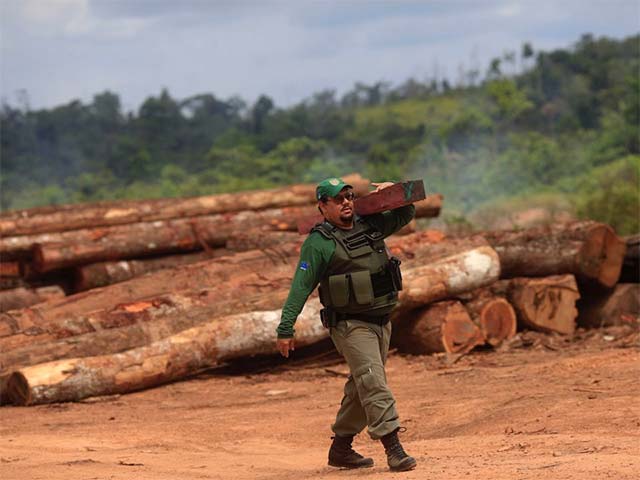
- 10 loại gỗ quý hiếm và đắt nhất trên thế giới
Các nhà khoa học hiện vẫn đang tranh cãi gay gắt về việc liệu trái đất có thực sự đang đứng giữa sự kiện tuyệt chủng hàng loạt tiếp theo hay không. Nhà cổ sinh vật học Smithsonian Doug Erwin, một chuyên gia về Great Dying, người rất có tiếng nói trong giới các nhà khoa học nghiên cứu về tuyệt chủng, khẳng định rằng chúng ta chưa thực sự bước vào thời kỳ đó.
Thế nhưng cũng có không ít tên tuổi lớn lại có quan điểm trái ngược. Theo Giáo sư Kolbert, "cho đến thời điểm chúng ta có được câu trả lời dứt khoát cho câu hỏi liệu trái đất đã bước vào thời kỳ tuyệt chủng thứ 6 hay chưa, rất có thể 3/4 số loài trên trái đất đã biến mất thực sự rồi!".
Dẫu vậy, vẫn có một điều mà tất cả các nhà khoa học đều chung một quan điểm, đó là loài người sẽ phải chịu trách nhiệm cho mất mát về mặt tự nhiên mà mẹ thiên nhiên đang phải gánh chịu từng giờ.
Theo một nghiên cứu được công bố trong năm 2014, tỷ lệ tuyệt chủng hiện tại trên trái đất đang cao hơn 1.000 lần so với trong trường hợp không có sự tồn tại của con người.
'Trong vòng 100 năm quá, có rất ít, nếu không muốn nói là gần nhưng không có bất cứ trường hợp tuyệt chủng nào được ghi nhận mà không có chút liên quan nào đến các hoạt động của con người', Giáo sư Kolbert cho biết.
Báo cáo mới nhất của Liên Hợp Quốc cuối cùng cũng có thể khiến cuộc tranh luận của các nhà khoa học tạm đi đến hồi kết.

- Sự xuống cấp của đất đai đe doạ hàng triệu người trong tương lai
Theo báo cáo này, có đến 75% tất cả các vùng đất trên hành tinh và 66% các đại dương đã bị thay đổi đáng kể bởi những hoạt động con người. Hơn 85% diện tích đất ngập nước toàn cầu đã biến mất và hơn 79 triệu mẫu rừng nguyên sinh hoặc rừng phục hồi đã hoàn toàn bị xóa sổ chỉ trong khoảng thời gian ngắn ngủi từ năm 2010 đến 2015.
Sự gián đoạn và suy thoái môi trường sống tự nhiên của các loài động, thực vật chắc chắn là một trong những nhân tố chính đang góp phần đẩy nhanh tốc độ tuyệt chủng.
Bên cạnh đó, Hugh Possingham, nhà khoa học đứng đầu tổ chức The Nature Conservancy, cũng cho biết rằng sự biến mất của nhiều loài động thực vật cũng sẽ "ảnh hưởng cơ bản đến nền kinh tế toàn cầu và sức khỏe của con người".
Đối với vấn đề liệu trái đất đã bước vào một thời kỳ đại tuyệt chủng tiếp theo hay chưa, Giao sư Hugh Possingham cho rằng việc mất thời gian tranh luận cho điều đó thật là vô ích, bởi 'sự tuyệt chủng hàng loạt này có thể không phải là lớn nhất trong lịch sử trái đất, nhưng nó chắc chắn sẽ vẫn diễn ra và là thảm họa tồi tệ nhất mà chúng ta phải trả giá cho những sai lầm của chính mình".
Quả đúng là như vậy, mẹ thiên nhiên đang cất lên từng tiếng kêu cứu và nếu con người, hay nói đúng hơn là bản thân mỗi chúng ta, nếu không có ý thức bảo vệ thiên nhiên tức là chúng ta đang tự giết chết đi tương lai của chính mình. Đó là một sự độc ác, không chỉ với tất cả các sinh vật trên hành tinh, mà còn đối với chính con cháu chúng ta mai sau!

You should read it
- History of Earth formation and 25 milestones (Part I)
- 'Iron Man' Robert Downey Jr. Founder of the Alliance to clean the earth with AI and robots
- Decipher the mystery of the extinction that destroyed 96% of marine life
- Review Second Extinction Early Access - Revenge Dinosaur
- The lost twin brothers of the Sun may be the culprits for the destruction of dinosaurs
- What is left of Asia if the whole ice on Earth melts?
- What horrible thing will happen to the Earth if the frogs become extinct?
- Stephen Hawking warned: 'Humans have only 100 years left to leave Earth.'
May be interested
- Climate change puts bees at risk of extinction, but it's not too late for humanity to save them and save themselves
 in a recently published scientific report, researchers claim climate change is the cause of bees' extinction.
in a recently published scientific report, researchers claim climate change is the cause of bees' extinction. - Terrifying scenario if the Earth lost oxygen in 5 seconds?
 oxygen plays an extremely important role in the earth's ecosystem, so its lack of just 5 seconds is enough to cause everything on this planet to be chaotic: every concrete building will collapse, the sky dark day, people and all creatures face the risk of extinction ...
oxygen plays an extremely important role in the earth's ecosystem, so its lack of just 5 seconds is enough to cause everything on this planet to be chaotic: every concrete building will collapse, the sky dark day, people and all creatures face the risk of extinction ... - Did you know: 50 tons of meteorite fragments are attacking the Earth every day
 a number makes you startled.
a number makes you startled. - Traces of a meteorite impact that shook the Earth 600 million years ago have been found
 about 600 million years ago, earth was home to strange, soft-bodied sea creatures. however, a massive asteroid impact in what is now northern australia may have wiped out this ecosystem.
about 600 million years ago, earth was home to strange, soft-bodied sea creatures. however, a massive asteroid impact in what is now northern australia may have wiped out this ecosystem. - Review Second Extinction Early Access - Revenge Dinosaur
 second extinction is a co-op fps game that has a solid foundation for potential future development even though it's only in early access.
second extinction is a co-op fps game that has a solid foundation for potential future development even though it's only in early access. - The Earth used to be purple and 8 secrets of little surprise
 the earth still has many mysteries that people cannot discover. here are the incredible surprises about earth that make you change the way you look at our common home.
the earth still has many mysteries that people cannot discover. here are the incredible surprises about earth that make you change the way you look at our common home. - Endless Nightmare 5: Curse PC
 endless nightmare 5: curse will be the next part in the endless nightmare game series in which players will experience another unique scary style.
endless nightmare 5: curse will be the next part in the endless nightmare game series in which players will experience another unique scary style. - Top 10 mysteries have been decoded by scientists
 today with modern science and technology, scientists have found evidence and explain some of the great mysteries of humanity: the cause of the destruction of mayan civilization, the process of building kim. egyptian pyramid, the exact location of the ship columbus used when exploring america ...
today with modern science and technology, scientists have found evidence and explain some of the great mysteries of humanity: the cause of the destruction of mayan civilization, the process of building kim. egyptian pyramid, the exact location of the ship columbus used when exploring america ... - An 'alien' object will fly over Earth in 2017?
 a strange object in the center of the sun's orbit was discovered by astronomer james scotti of the university of arizona (usa) in 1991 and was named 1991 vg. it will sweep through the earth in the summer of 2017 in the southern hemisphere. now scientists have not determined exactly what that object is.
a strange object in the center of the sun's orbit was discovered by astronomer james scotti of the university of arizona (usa) in 1991 and was named 1991 vg. it will sweep through the earth in the summer of 2017 in the southern hemisphere. now scientists have not determined exactly what that object is. - Signs that you have chosen the right working environment
 a great company is where you can express yourself, no need to hide anything, even your weaknesses are not dissected and disparaged.
a great company is where you can express yourself, no need to hide anything, even your weaknesses are not dissected and disparaged.










 We are inhaling super fine dust PM2.5, the most dangerous dust in the world can penetrate into human body cells
We are inhaling super fine dust PM2.5, the most dangerous dust in the world can penetrate into human body cells 2017 may be the hottest year in the record breaking history of 2016
2017 may be the hottest year in the record breaking history of 2016 You will be startled when watching the video describing the process of Earth's hotness in the past 100 years
You will be startled when watching the video describing the process of Earth's hotness in the past 100 years Startled with the harmful effects of solar cells on the environment
Startled with the harmful effects of solar cells on the environment The Earth has more than 8 billion tons of plastic, weighing about 1 billion elephants
The Earth has more than 8 billion tons of plastic, weighing about 1 billion elephants Turn human waste into cheap coal for human daily life
Turn human waste into cheap coal for human daily life